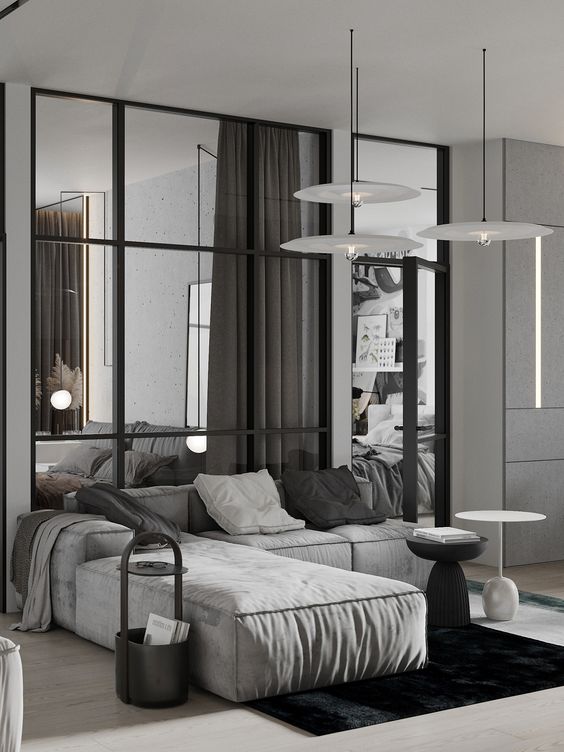Masezza.com – A monochrome interior is the perfect choice for a bathroom, bedroom, kitchen or any other room that requires high levels of privacy. Opting for a monochrome interior design will give you ultimate privacy along with an inviting atmosphere in your home. As with all other forms of interior designing, choosing the right color is the most important aspect of a monochrome bathroom. Generally, monochrome looks best in bathroom cabinets with polished chrome finishes. Ideally suited for Scandinavian and industrial interior designs, monochrome, interior designs are timeless and contemporary.
Tricks for Choosing Green for a Monochrome Interior
The trick to choosing a shade of green for your monochrome interior is to match it with the colors found in your paint color schemes. Most people go for the classic light green, which gives off a soothing feeling. However, if you want a more modern look, then opt for a shade of beige or light brown. These shades also create a relaxing environment. There are no hard rules when it comes to choosing green for a bathroom; it’s all about what creates the right effect for your design and space.

Monochrome shades are available in several tones ranging from soft pastel to dark hunter green. It is best to stay away from dark shades as they can create a heavy oppressive atmosphere. If you do choose darker shades of green for your monochrome interior, ensure that they are at least 3 times lighter than the wall color. When shopping for these shades online, you can find them in a number of different patterns. These patterns include stripes, florals and leaf prints.
Important Aspects of Creating a Monochrome Interior
Another important aspect of creating a monochrome interior is to choose textures that contrast with the walls. The best textures to use when designing a monochrome palette include rough and waxy ones like brick dust, rough textured plaster and fine sand. Other textures like fine ceramic tile, polished concrete and natural stone are also great options. Textures such as foil wallpaper, linen, faux fur and leather also add a touch of texture to the room. You can even create a mosaic type of texture on one wall by painting it in a contrasting color, like a white canvas.

One of the biggest challenges that many home designers face when working on monochrome interior is deciding how to balance boldness and softness. You have to get the feel of one color while maintaining the background color throughout the interior. This is not always easy, especially if you work with a limited amount of space. To achieve the right effect, use textures in your interior that create a sense of movement, such as strong focal points, subtle accents, as well as complimentary elements.
Easy Way to Create a Monochrome Interior Scheme
Texture is particularly useful when creating monochrome interior schemes. For example, if you’re using wallpaper as the main wall color, then use vertical stripes or bands to break up the solid color. Or, if you want an elegant effect, paint one wall in a deep red, then add a few neutral shades for a balanced look. You could also paint one wall in a deep blue then add a couple of greens for a nice feel. All of these textures and varied shades will subtly alter the overall look and will make for a more interesting decor.
Texture is not only useful for creating interesting monochrome interior design, but is also practical in creating an attractive environment. You may find that a monochrome interior gives you more freedom to express your creative edge. By choosing interesting textures, you can create subtle differences by using textures that compliment your main color scheme. Also, by creating small but meaningful patterns with multiple shades, you can give the impression of greater depth and width than you would otherwise. By alternating between solid colors and patterned shades, you can show off a range of textures and heighten the drama of a space.

When selecting which shades to use in a monochrome interior, remember that the dominant color palette often makes the choice easier. By keeping a limited number of basic hues, you can create interesting and different effects. But because of its limitation, choose only a few shades that complement and enhance your main color palette. Remember, texture is important in interior design but not as important as color.

